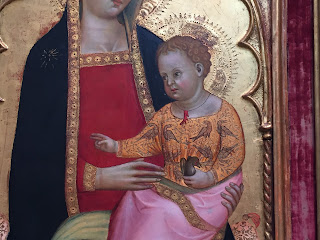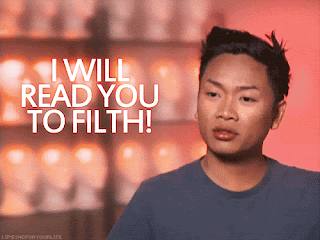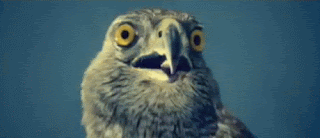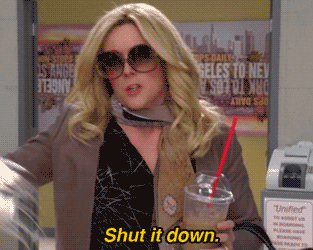Election season got you down? Let's join hands and find something we can all agree on. Like how great it is to make fun of really atrocious fashion history books.
(Sorry mom, there might be some swearing)
Several years ago I started reviewing academic fashion books for a publication called
Choice. Most of my reviews have been positive, and only once
have I had the pleasure of ripping into one of those books and marking it as "not recommended." This month I got another opportunity.
The book is called
Fashion Innovators and it basically a two-volume encyclopedia of fashion biographies.
So I crack open the first volume and I notice is that it is almost all text, with only a few portrait illustrations which are creepy and look like police sketches.
HOLY CRAP
HIDE YOUR CHILDREN
So far, so terrifying. I head straight for the Chanel essay because that is a good litmus test of accuracy vs. repeating incorrect old myths. Sure enough, it talked about how she freed women from the corset, introduced the bob haircut, and basically singlehandedly invented fashion of the 1920s -- or as the book puts it, the "flaming 20's."
Ok, so there is definitely blood in the water now. I gleefully flip to the index to see who else is likely to have an error-ridden essay. Instead, I get distracted by a lot of names I don't know. And some I do know...but I'm not sure how they qualify as "one of the most innovative and influential individuals in the development of fashion." Like actors Dijimon Hounsou and Cameron Diaz.
I go to Hounsou's essay and see a pretty brief bit on a modeling career but most of it is about his acting. Now, each essay includes an "affiliation" sidebar, which is supposed to be about the "primary company or organization with which the individual has been most significantly associated." For example: Liz Claiborne's affiliation is "Liz Claiborne, Inc". But for Djimon Hounsou, his nearly full-page sidebar is about the movie
Amistad. And no, they don't make some interesting case about it being a fashion movie. It is just a summary of the plot and what Hounsou had to say about working on it.
I find other mystifying essays, many about people who are famous for things other than fashion. Such as Ellen Stewart, who did some fashion designing but is mostly known as an influential theater director and producer. Or doll designers Madame Alexander and Robert Tonner who are...famous for making dolls.
I also start noticing some glaring omissions. Where is Paul Poiret? Jeanne Lanvin? Elsa Schiaparelli? I go back to the Publisher's Note see that these biographies are mostly taken from a magazine called
Current Biography which began publication in 1940. Ok, so I
guess the scope of this book is actually 1940 onward, and
maybe I can concede that their peak years were prior to that. BUT THEN YOUR BOOK SHOULD BE TITLED
FASHION INNOVATORS: 1940-PRESENT.
But this also starts to make more sense. I start to think that this book may actually have been written by a robot. They probably did a word search for "fashion" in all their
Current Biography essays and just slapped together whatever came up.
The Publishers Note brags that the book has a "strong multi-ethnic, cross-gender focus" so maybe by including Dijmon Hounsou and Ellen Stewart they were trying to have more people of color. Fine. The fashion world could
certainly do better on the diversity front. But the thing is, you don't exactly have to grasp for straws to come up with POC who are important and influential in the fashion world. Sure, Hounsou did some modeling and is black. But you know who also fits that criteria who wasn't included? TYSON BECKFORD.
Easily the most successful and well-known male model of all time.
Once I starting thinking about it, I realized there were lots of POC who would be obvious choices for a book on fashion influencers and innovators but weren't included. Such as:
Robin Givhan
Alexander Wang
Tracy Reese
Isabel Toledo
Prabal Gurung
Hanae Mori
Grace Jones
Also, I'm totally willing to be convinced that Hounsou is more important than I realize. But then MAKE THE CASE in the essay rather than telling me he was in
LARA CROFT TOMB RAIDER: THE CRADLE OF LIFE.
And while white people aren't exactly struggling for representation in the fashion world, I still think that a book that made room for Cameron Diaz and Lauren Conrad could have made space for:
Kate Moss
David Bowie
Cecil Beaton
Richard Avedon
Oh wait...one more you missed...
CHRISTIAN FUCKING DIOR
Yes, that's right. Let that sink in. AN ENCYCLOPEDIA OF FASHION BIOGRAPHIES THAT DOESN'T. INCLUDE. DIOR.
It is hard to top that but basically everywhere I looked this book was embarrassingly bad. Many of the essays were 10+ years out of date. For example, the "Life's Work" section of Alexander McQueen's bio ends with his "current" 2002 collaboration with YSL to create a woman's fragrance.
Speaking of the "Life's Work" section, it often included weird descriptions of physical appearance:
A tiny, fragile woman with pale, almost luminous skin, a high forehead, prominent cheekbones, and deepest brown eyes, Mme. Gres was described as looking like "a Sunday school teacher," a "madonna" or "the prioress of a Normandy convent."
This feels sexist. This is sexist, right?
Or a combination of physical appearance and...other information?
Nat Abelson was five feet seven and one half inches tall, weighed 165 pounds and had gray hair and brown eyes. He was of the Jewish faith and generally voted the Democrat ticket.
Is there a way to convey that information that doesn't
sound like I'm reading his FBI file?
I could go on and on. More weird sidebars, a totally useless and half-assed timeline at the end, and typos galore. But I'll leave you with just one final embarrassment.
Are you ready?
Does anything seem off to you about this picture of "Yves St. Laurent"?
For those who don't know, YSL is pretty recognizable. More like this:
At first I thought
well maybe when he was very, very young but even then I've never seen a picture of YSL without his glasses. I was just about to draw glasses on the picture when it hit me.
This is Hedi Slimane. He was creative director for Yves Saint Laurent from 2012 to early 2016.
Again. THEY PUT TOGETHER A BOOK ABOUT FASHION AND NO ONE WORKING ON THE PROJECT KNEW WHAT YVES SAINT LAURENT LOOKED LIKE.
Stay in fashion school, kids!
 For four years now I've been posting on (or around) November 25th about St. Catherine's Day--the day that celebrates the patron saint of archivists, couture house workers, and single women over 25. In years past I've gathered my friends, donned silly hats, and toasted to history, fashion, and life without husbands.
For four years now I've been posting on (or around) November 25th about St. Catherine's Day--the day that celebrates the patron saint of archivists, couture house workers, and single women over 25. In years past I've gathered my friends, donned silly hats, and toasted to history, fashion, and life without husbands.




































































